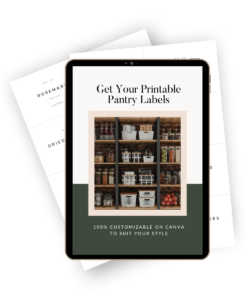In today’s fast-paced world, making healthier choices can be challenging, especially when it comes to food. With the plethora of products available, it’s essential to know how to read food labels to make informed decisions that benefit your health. Here’s a comprehensive guide on how to read food labels and a list of the top 12 most toxic ingredients you should avoid.
Understanding Food Labels
- Start with the Ingredients List: The ingredients list is your best friend when it comes to understanding what’s in your food. Ingredients are listed in descending order by weight, meaning the first few ingredients are the most prominent.
- Serving Size: Always check the serving size. Many products contain multiple servings per container, which can be misleading if you’re not paying attention.
- Calories and Nutrients: Look at the calories per serving and the nutrient content, including fats, cholesterol, sodium, carbohydrates, fiber, sugars, and protein. Aim for products with higher fiber and protein and lower added sugars and unhealthy fats.
- Daily Values (%DV): The %DV helps you understand how much a nutrient in a serving of food contributes to a daily diet. Use it to gauge whether a food is high or low in a particular nutrient.
- Watch Out for Health Claims: Terms like “natural,” “organic,” and “low-fat” can be misleading. Always verify these claims by reading the ingredients list and nutritional information.
Top 12 Most Toxic Ingredients to Avoid
- High-Fructose Corn Syrup (HFCS): Found in sodas, candies, and processed foods, HFCS is linked to obesity, diabetes, and heart disease. It’s a cheap sweetener that’s best avoided.
- Artificial Sweeteners: Aspartame, sucralose, and saccharin can cause headaches, digestive issues, and may even disrupt metabolic processes. Look for natural alternatives like stevia or honey.
- Trans Fats: Often listed as partially hydrogenated oils, trans fats are found in fried foods, baked goods, and margarine. They increase bad cholesterol (LDL) and decrease good cholesterol (HDL).
- Artificial Colors: Colors like Red #40, Yellow #5, and Blue #1 are linked to hyperactivity in children and may have carcinogenic effects. These are commonly found in candies, sodas, and processed foods.
- Monosodium Glutamate (MSG): Used to enhance flavor, MSG can cause headaches, nausea, and chest pain in some individuals. It’s often found in soups, canned vegetables, and processed meats.
- Sodium Nitrate/Nitrite: Common in processed meats like bacon, ham, and sausages, these preservatives are linked to an increased risk of cancer and other health issues.
- Preservatives (BHA and BHT): Butylated hydroxyanisole (BHA) and butylated hydroxytoluene (BHT) prevent oils from going rancid. They are suspected of being carcinogens and can cause allergic reactions.
- Propyl Gallate: Used to preserve fats and oils, propyl gallate is found in meat products, soup bases, and chewing gum. It may be a carcinogen and cause stomach and skin issues.
- Potassium Bromate: Added to bread to increase volume, potassium bromate is linked to cancer in animals and is banned in many countries. Look for unbromated flour.
- Sodium Benzoate: A preservative found in sodas and acidic foods, sodium benzoate can form benzene, a known carcinogen, especially when combined with vitamin C.
- Carrageenan: Used as a thickener and stabilizer in dairy and dairy alternatives, carrageenan can cause inflammation and gastrointestinal discomfort.
- Artificial Flavors: These are synthetic chemicals that mimic natural flavors and can be found in a wide range of processed foods. They may cause allergic reactions and other health issues.
Tips for Healthier Choices
- Choose Whole Foods: Opt for fresh fruits, vegetables, whole grains, and lean proteins over processed foods.
- Cook at Home: Preparing meals at home allows you to control the ingredients and avoid unwanted additives.
- Read Labels Carefully: Familiarize yourself with ingredient names and be vigilant about reading labels.
- Support Local Farmers: Buying local produce reduces your exposure to preservatives and supports your community.
Want More?
Grab our 50 page downloadable guide to receive even more details about these 12 harmful ingredients

By becoming a savvy label reader and avoiding these toxic ingredients, you can make healthier choices that contribute to your overall well-being. Remember, knowledge is power, and every small step towards a healthier lifestyle counts.











 Don’t forget to grab your Free Pantry Labels! Fully editable on Canva to suit your personal design style!
Don’t forget to grab your Free Pantry Labels! Fully editable on Canva to suit your personal design style!
0 Comments